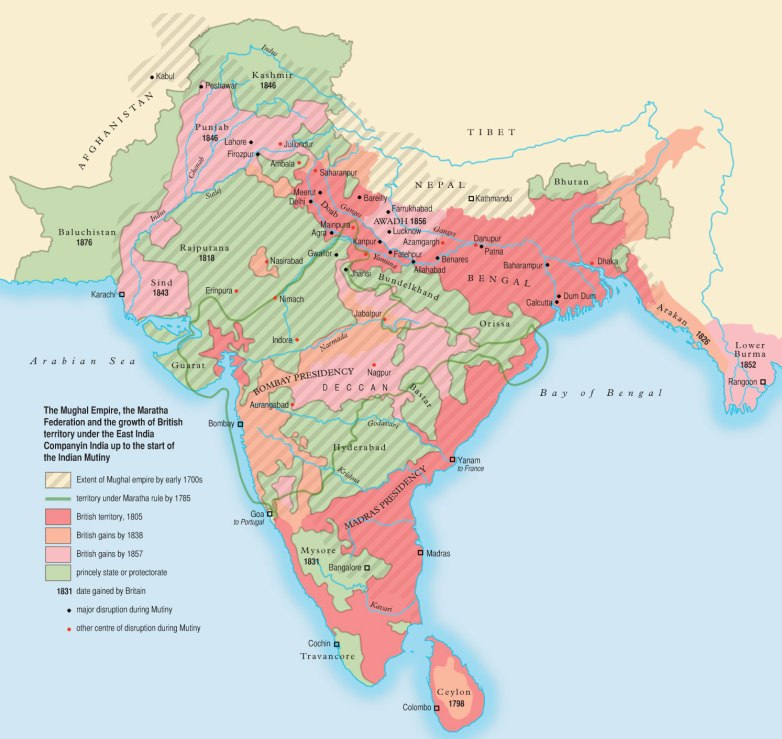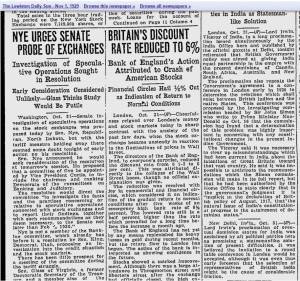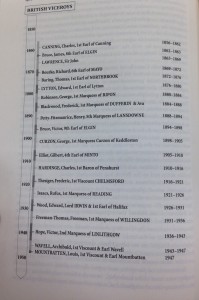Back To The Indian History Master Index
India under the East India Company
The British Raj 1750-1900
Table of Content
- Problems That Led to Empire’s Decline/Breakup
- The Great Mutiny of 1857
- The Government of India Act 1858
- Creation of Indian civil service (1858)
- Queen Victoria assumed title of “Empress Of India” in 1877
- Indian National Congress 1885
Problems That Led to Empire’s Decline/Breakup
Indian independence movement (Amritsar Massacre, Gandhi’s use of nonviolent civil disobedience, boycott of textiles, Salt March)
Issues related to cultural diversity of empire and forced assimilation (White Man’s Burden) Devastation in Great Britain during battles of World War II
Post–World War II economic conditions
Rise of nationalist movements throughout the British Empire (Ireland, Ghana, Kenya, Egypt) Emergence of strong leaders of nationalist movements (Kwame Nkrumah, Jomo Kenyatta, Gamal Nasser)
Failure to keep promises from World War I
The British Empire had spread to many points of the globe by the 1920’s (Doc.7). They had colonies in modern day Canada, India, and Australia. The size of their empire and their economy made them superior to other European countries. However, the decline of Great Britain started because they were overextended in these colonies. In India. World Wars I and II forced Britain to use many of the resources and troops from India and other areas in the empire. World War II eventually put Britain in debt, owing over 1 billion pounds to India alone. The Indian people who had long resented British political, economic, and cultural dominance and control had pushed for selfrule. They had been pushing since before World War I. The Indians were promised in the 1930’s that they would be granted independence but they were still kept as a colony. However, the take over of the Labour Party as the dominant political party in Great Britain after World War II increased the likelihood of India gaining independence as the Labour Party showed sympathy for India and its people (Doc. 8). As India gained its freedom, so did other colonies who wanted independence. Colonies in the Americas, Africa, and Asia gained independence from Britain and this greatly contributed to the decline of the British Empire. Without its colonies Great Britain lost much of its industrial edge because it lost many of the markets, cheap raw materials, and monopolies it held during its colonial past, and went into a period of economic decline (Doc. 9).
However, British culture still affects multiple regions of the world today. English is a unifying language around the world. Many British traditions are still active in many places throughout the world such as playing cricket in India. Most regions where the British had colonies still have their society partly based on British culture, even today.
From chrome-extension://efaidnbmnnnibpcajpcglclefindmkaj/https://www.nysedregents.org/globalhistorygeography/615/glhg62015-rg2.pdf
Government of the Raj
The government of the Raj consisted wholly of British officials and was headed by the viceroy and the appointed members of his council. After the Indian Councils Act was passed in 1861 this executive council acted as a cabinet and also as part of an imperial legislative council.
Each of British India’s eleven provinces had its own governor, assisted by similar provincial legislative councils of appointed officials. There were also a small number of Indian council members who were part of the local elite, appointed solely for consultative purposes.
British India’s eleven provinces
Bengal. Punjab, Central Provinces and Berar, Bombay, Assam, Baluchistan, Sind, Coorg, Madras Presidency, Bihar and Orissa, Delhi, North-West Frontier Province.
Empress of India
British rule over India was reinforced when in 1876 Parliament passed the Royal Titles Act, which formally endowed Queen Victoria with the title of Empress of India.
Indian nationalists
In 1885 a group of Indian nationalists founded the India National Congress and slowly Indians began to play an increasing role in politics in both India and the Empire.
In the 1890s both Dadabhai Naoroji, a founder of the Indian National Congress fiercely critical of British rule, and Sir Macherjee M. Bhownaggree, who supported the government of the Raj, sat in the Westminster Parliament as MPs for London constituencies.
United Provinces
14 Nov 1834 Presidency of Agra 1 Jan 1836 North-Western Provinces 3 Apr 1858 Oudh taken under British control 15 Feb 1877 Oudh added to North-Western Provinces 22 Mar 1902 United Provinces of Agra and Oudh 1 Apr 1937 United Provinces 15 Aug 1947 part of independent India
Sind
1843 annexed by Britain; subordinated to Bombay Apr 1936 separate province 15 Aug 1947 part of Pakistan
Punjab
2 Apr 1849 annexed by Britain 15 Aug 1947 divided between India (see Punjab under Indian states) and Pakistan (see Punjab under Pakistani provinces)
North-West Frontier Province
1849 British capture area from Punjab
1901 North-West Frontier Province created
15 Aug 1947 part of Pakistan
Madras
1 Mar 1640 Madras an English possession
1640 - 1652 subordinate to Bantam (in the East Indies)
1652 - 1655 Presidency of Madras
1684 Presidency of Madras
10 Sep 1746 - Aug 1749 French occupation
20 Oct 1774 part of British India
15 Aug 1947 part of independent India
Delhi
1832 part of North-Western Provinces
1858 part of Punjab
1912 separate province
15 Aug 1947 part of independent India
Coorg
1834 annexed by U.K. 15 Aug 1947 part of independent India
Central Provinces and Berar
1852 Nagpur province
1861 Nagpur united with the Saugor Nerbudda territories
1862 renamed Central Provinces
1 Oct 1903 Berar (perpetually leased from Haydarabad) administered by
Central Provinces
24 Oct 1936 Central Provinces united with Berar
15 Aug 1947 part of independent India
Bombay
23 Jun 1661 Bombay Island and dependencies ceded to England by Portugal
18 Sep 1662 English arrive to take possession
18 Feb 1665 final cession of Bombay to England
23 Sep 1668 - 2 May 1685 Bombay Presidency subordinated to Surat,
under British East India Company rule
15 Aug 1947 part of independent India
Bihar and Orissa
1756 Bihar part of Bengal
1803 Orissa occupied by U.K.
1 Apr 1912 separated from Bengal as Bihar and Orissa province
1 Apr 1936 Bihar and Orissa become separate provinces
15 Aug 1947 part of independent India
Bengal
1633 first English settlement (subordinate to Madras)
3 Sep 1681 Bengal a separate agency
Jan 1694 - 1698 subordinated to Madras
26 May 1700 Presidency of Bengal
20 Oct 1774 direct rule by central government of British India
1854 Bengal province
16 Oct 1905 divided into two provinces: Bengal, and Eastern Bengal and Assam
1 Apr 1912 division reversed; Bengal Presidency restored; Assam and Bihar and
Orissa made separate provinces
15 Aug 1947 divided between India (West Bengal) and Pakistan
(East Bengal)
Baluchistan
19 Jun 1887 British Baluchistan Province and Tribal Areas
1896 province of British India
15 Aug 1947 part of Pakistan
Assam
24 Feb 1826 ceded to U.K. by Burma; becomes part of Bengal
1832 princely state restored
1838 part of Bengal
1874 Assam a separate province
16 Oct 1905 - 1 Apr 1912 part of province of Eastern Bengal and Assam
15
Aug 1947 part of independent India
Andaman and Nicobar Islands
1754/56 Nicobar Islands (Frederik Oerne Islands) a Danish colony
(administered from Tranquebar)
1784 - 1807/09 Nicobar Islands abandoned
1789 Andaman Islands part of British India
1830 - 1834 Nicobar Islands abandoned
1848 Nicobar Islands gradually abandoned
16 Oct 1868 Nicobar Islands part of British India
23 Mar 1942 - 7 Oct 1945 Japanese occupation
Dec 1943 - 22 Jul 1945 administered by Japanese-sponsored Free India Movement
15 Aug 1947 part of independent India
Backround
In 1858 Lord Palmerston, then-Prime Minister of the United Kingdom, introduced a bill for the transfer of control of the Government of India from the East India Company to the Crown, , referring to the grave defects in the existing system of the government of India.
On 2nd August 1858, the British Parliament passed a bill to take over the administration of India from the East Indian Company by the British Crown. The title of Viceroy was introduced for the supreme representation of the British Government in India. The provision of this bill called for the dissolution of the British East India Company that was ruling India under the patronage of the Parliament and transfer of that power to the British Crown. The then Prime Minister of the United Kingdom, Lord Palmerston, introduced this bill, which would transfer power from the East India Company to the Crown, citing shortcomings in their administration of India. The uprising of 1857 was absolutely unexpected and shook the foundation of British rule in India. British newspapers carried gruesome reports of the ghastly atrocities of the Indians upon the British, drastically changing the impression the British had of Indians. Native Indians, who were earlier thought of being simple minded people, now appeared as bloodthirsty and capable of killing the British who ruled them. This worried the British immensely, though they were still not willing to give up India that easily. Reason being that India was an important colony for the British Empire, being a source of notable wealth. Also, unlike other British dependents, India did not require any subsidies from London, because of the land taxes.
The Governor-General of India in Kolkata (then Calcutta) was given the new title of Viceroy of India, who would be the personal representative of the Monarch. The position of the Viceroy was so critical that by the end of the 19th Century it was held by some of the most prominent leaders in Britain; a reflection of how important India was to London. The Viceroys reported directly to the Secretary of State for India in London and were advised by the Council of India. The Act ushered in a new period of Indian history, bringing about the end of Company rule in India. The era of the new British Raj would last until the Partition of India in August 1947, when the territory of the British Raj was granted dominion status as the Dominion of Pakistan and the Dominion of India.
In Britain the year 1837 is best remembered for the start of the Victorian era. To political historians of India, 1837 represents the black year in which the Orientalist movement, led by Prof Horace Hayman Wilson in Oxford and H T Princep in Calcutta, was finally defeated by the Anglicists and the Evangelicals under T Macaulay and Lord Bentinck; a defeat that led to the imposition of English as the chief medium of instruction and the ending of the government funding for the printing of works in the vernacular.
Direct British Rule
After assuming the direct rule (Hindi “raj”, hence the term “Raj” for the colonial government) the British were critically concerned to keep their apparatus of civilian administrators as small as possible but maintain an army large enough to avoid a repeat of The Great Mutiny of 1857. These administrators made use of Indian administrators who, however, did not have any real decision making powers. The raj functioned because of a “divide and conquer” policy that exploited the many divisions existing in Indian society, which prevented the Indians from making common sense and challenging British rule.
Creation of the Civil Service
Even as the pacification was winding down, the British government, stunned by the course of events, conducted an investigation which led to sweeping reforms in 1858. The East India Company was dismantled and the British government itself took up the task of governing India. In a proclamation to England and India, Queen Victoria announced that British policy would no longer attempt to “impose our convictions on any of our subjects.”
An Indian civil service was created (1858) was created and made open to British and Indians alike to administer the subcontinent’s affairs. The incorporation of India as the linchpin of the British Empire was completed when Queen Victoria assumed, among her many titles, that of “Empress Of India” in 1877. India had now become, it was said, “the jewel in the crown” of the empire (see map below).

British Empire In India 1858-1914
Less than a decade later, the fruits of the new civil service and the Indian schools feeding it were already evident, though perhaps not in the way its creators envisioned or desired. In 1885, Indians first convened the National Congress, the ancestor of India’s present Congress Party. The Congress’s ongoing mission was to win greater autonomy for India within the structure of the British Empire and, by the opening decade of the 20th century, to push for Indian Independence.
Already by the early 1890s, a young British-trained lawyer named M K Gandhi (1869-1948) was actively campaigning for the rights of Indians in British controlled South Africa. There he honed the skills and developed the techniques that would make him among the most recognized world figures of the 20th century as he pursued his quest to ust the British from India through nonviolence and non-cooperation.
The Civil Service Caste
In the final decades of the 19th century the British community of India rarely more than 100,000 at any given time (in a population of some 270 million or 27 crores in 1900) increasingly set itself up as a caste and a race apart. During the heyday of the East India company rule, few wives and family moved from England to what was considered a hardship post. India’s unrelenting summer heat and constant rain during the monsoon season took a considerable toll on those not fully acclimated, as did its array of tropical diseases, particularly malaria. One of the reasons young EI Company men were so eager to “make their pile” in a hurry was the knowledge that their life expectancy in India was rather low.
The Trade Routes for British, Dutch and Portuguese
National liberation movements were beginning to form by the late 1800s both in India and the rest of Southeast Asia (Indonesia, Philippines etc.). For the tie being, they were unable to dislodge their foreign masters, but they lay the foundation for the movements that successfully expelled European colonists after the World War II. This section deals with that.
| INDIA | BRITAIN | |
| 1858 | Government of India Act 1858 On 2nd August 1858, the British Parliament passed a bill to take over the administration of India from the East Indian Company by the British Crown. The title of Viceroy was introduced for the supreme representation of the British Government in India. |
|
| 1892 | INDIA COUNCILS ACT: Indirect election to Legislative Councils conceded |
|
| 1892 | INDIA COUNCILS ACT: Indirect election to Legislative Councils conceded |
|
| Serious famines 1895 – 1900 | 1895 | |
| Plague 1896 – 98 | 1896 | |
| Swadeshi movement against bengal partition | 1905 | Curzon’s partition of Bengal |
| 1906 | Partition reversed | |
| Tilak’s re-arrest sparks more trouble in Maharastra | 1908 | |
| First bombs and assassinations | 1909 | Indian Councils Act 1909 / Morley-Minto Reforms; more elacted members on Legislative Councils; Separate Hindu and Muslim electorates |
| Ghadr Movement | 1914 | FIRST WORLD WAR |
| Lucknow Pact. Gandhi’s first Satyagraha | 1916 | |
| AMRITSAR MASSACRE | 1919 | The Government of India Act of 1919./MONTAGUE-CHELMSFORM REFORMS |
| KHILAFAT MOVEMENT 1920-23 | 1920 | |
| Gandhi promises Swaraj | 1921 | Fiscal autonomy conceded |
| The commission was boycotted by the Indian National Congress, demands Purna Swaraj | 1927 | Simon Commission appointed to report on the working of the Indian constitution established by the Government of India Act of 1919. Headed by the joint chairmanship of the distinguished Liberal lawyer, Sir John Simon, and Clement Attlee, the future prime minister. |
| Hails independence | 1929 | 31 October Viceroy Irwin declares “the attainment of Dominion Status” |
| SALT MARCH CIVIL DISOBEDIENCE CAMPAIGN 1930-33 | 1930 | ROUND TABLE CONFERENCE |
| 1931 | Gandhi-Irwin Pact; Federation proposal attracts Princes | |
| 1935 | GOVERNMENT OF INDIA ACT gives provincial autonomy | |
| Elections – Congress government in 7 provinces | 1937 | |
| League condemns Congress Raj | 1938 | |
| Congress ministries resign | 1939 | SECOND WORLD WAR |
| League adopts “Pakistan Resolution” | 1940 | |
| Anto-war Satyagraha | 1941 | |
| QUIT INDIA MOVEMENT | 1942 | CRIPPS MISSION offers virtual independence but fails to discountenance Pakistan |
| Gandhi-Jinnah talks fail | 1944 | |
| 1945 | SIMLA CONFERENCE; Jinnah holds to ransom | |
| Elections; Congress triumphs but League progresses | 1946 | Atlee declares end of British rule in 1948 |
| Direct Action Day and Calcutta killings | 1947 | MOUNTBATTEN concedes Pakistan |
1929:

Throughout Irwin’s term as Viceroy, his chief strategic aim was to keep India in the empire and so he had to settle ‘the real question, whether all this Indian nationalism that is growing and bound to grow, can be guided along imperial or will more and more get deflected onto separatist lines.’ To win the big stake, and to keep British control over what mattered, Irwin’s scheme was to give politician power in the provinces. But he wanted to keep the central control at Delhi.
The Viceroys 1858 – 1947
References
6. Indian Councils Act of 1909 http://www.britannica.com/topic/Indian-Councils-Act-of-1909



